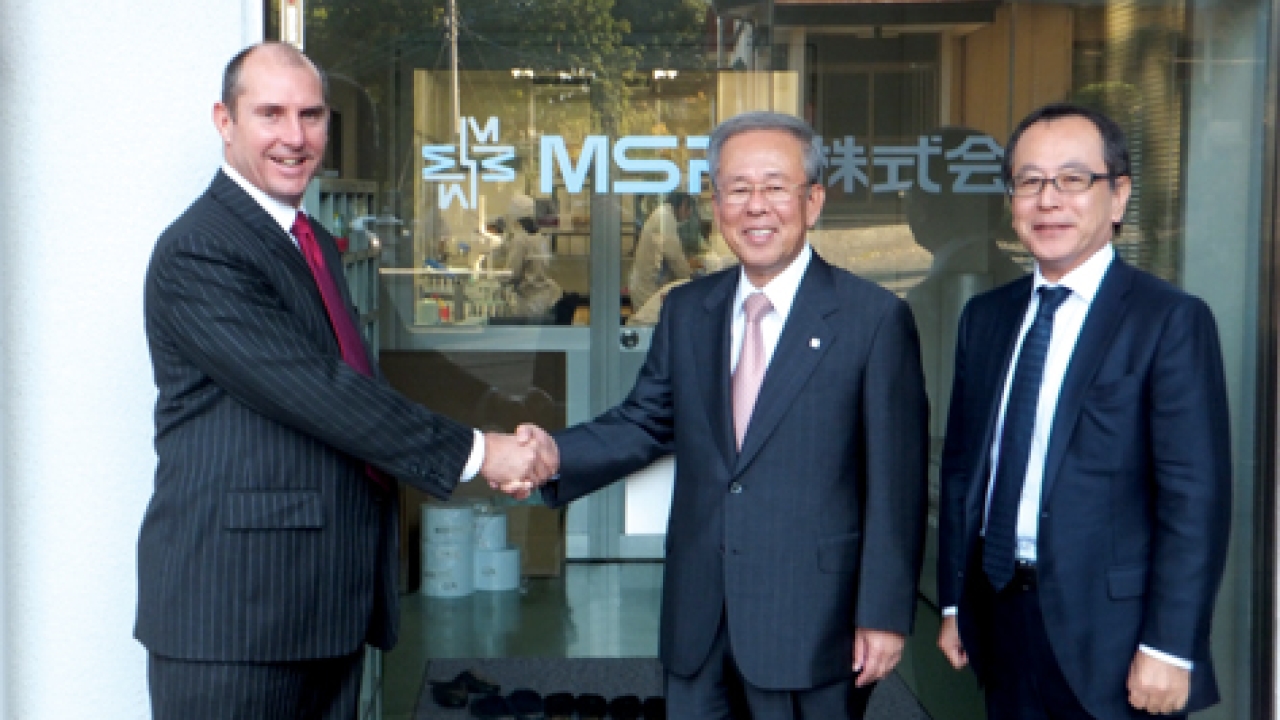Addressing Asia

Label converters are looking to expand operations overseas and seek new markets in Asia, as Roger Pellow discovered meeting MSP owner Mitsuo Komiyama
Mitsuo Komiyama and his wife set up label converter MSP in Japan over 30 years ago. It was a partner of local printing press and materials manufacturer Lintec for most of this time, which was a great support for the company in the early days.
MSP started out printing plain labels and now specializes in the industrial and consumer electronics markets, which account for 70 percent of the company’s label printing business, as well as track and trace label systems. Half of the company’s turnover comes from a specialist die-cutting operation, which uses custom made machinery, Koto solid dies and Tsukatni flexible dies.
Business challenges
In addition to three plants in Japan – the oldest is located in Uenohara and has been there since 1998 – MSP moved into the Philippines in 2008 and expanded into Thailand in 2009. It has 115 employees globally, with 80 of these based in Japan.
Komiyama explains, ‘Margins in Japan are very tight due to the high cost of the labor and deflationary economics, which has made it difficult to put through price increases in the last 10 years. We expanded into the Philippines because labor cost there is one tenth of the cost in Japan, as well as allowing us to open new markets.’
Komiyama’s son, Satoshi, is also involved in the business as head of sales. He believes the biggest challenge is the Japanese economy – the Great East Japan Earthquake caused the Japanese label market to decrease by one to two percent in early 2011 but it is expected to recover by two percent in 2012. Despite this, the company has continued to grow at seven percent per annum and reports an annual turnover of three billion Japanese yen, in comparison to the average Japanese label printer’s turnover of one billion yen.
According to Komiyama, the overall market in Japan is flat and some label printers are going out of business. Large companies are getting bigger and acquiring others whilst small businesses are surviving in niche markets. ‘It is the middle companies that are being squeezed out.’
As key customers, such as Toshiba, move out of Japan, MSP is focusing on addressing overseas markets and exports 20 percent of business into Asia-Pacific. Komiyama adds that in Thailand the company produces high volume, low margin work like price-weigh labels.
In line with the electronic companies it serves, MSP has a strict ‘no shoe’ policy within its plants. Another unusual quirk is the inspection method. After normal inspection, a final check is carried out manually in a special climate controlled inspection room.
Most materials are supplied by Lintec and an inventory of just one week is kept. MSP has been paying to recycle all its waste for the past five years, sending matrix waste to a recycling company where it is turned into fuel pellets.
MSP moved into digital printing with an HP Indigo ws4500 two years ago. However, Komiyama says: ‘We are still learning how to make good money out of it’. The average digital print run is 5,000 labels compared to an average print run of 30,000 labels on the company’s Lintec and Sanjo letterpress machines and Mark Andy 22000 10-inch flexo press. Converting is done offline, using Onda equipment.
Komiyama concludes, ‘One of biggest threats to the label industry in Japan is that commercial printers are dying. As their markets die out, they are looking to move into labels and undercutting label printers and taking their business.’ To survive, label printers need to work on being sales and marketing organizations as well, and this is one aspect of MSP’s strategy moving forward.
Japanese Label Association
Komiyama is also president of JFLP, the Japanese label association, which has 800 members. Komiyama estimates the total of label printers in Japan to be 3,200.
Mr Komiyama and Lintec recently hosted in Tokyo the sixth meeting of the L9, which brings together nine leading regional label associations in Tokyo. It focused on the industry’s response to the challenge of environmental sustainability, hearing from the top management of two leading global players – Avery Dennison and UPM Raflatac – about their companies’ perspective on this subject. Suntory, a major local beverage company, completed the scope from an end-user perspective.
The meeting produced recommendations to align efforts as an industry to stimulate environmental sustainability through collaboration on regional waste management strategies.
Other topics covered included the World Label Awards framework, benchmarking standards, and a survey of regional trends and developments. Delegates visited Toyota and Osaka Seal Printing looking at the working of their Kaizen continuous improvement systems.
Lintec profile
Lintec’s pressure sensitive materials manufacturing business covers a wide range of end user sectors, with label converting applications accounting for some 40 percent of the company’s business.
These PS substrates use the full range of paper and filmic materials and also now include RFID, smart and optically variable labels.
The company also manufactures label printing presses, packaging machines and related electronic equipment.
Pictured: (L-R) Roger Pellow, MD, labels and packaging group, Tarsus; Mitsuo Komiyama, MSP; and Akio Nemoto, general manager, Lintec
This article was published in L&L issue 3, 2012
Stay up to date
Subscribe to the free Label News newsletter and receive the latest content every week. We'll never share your email address.

